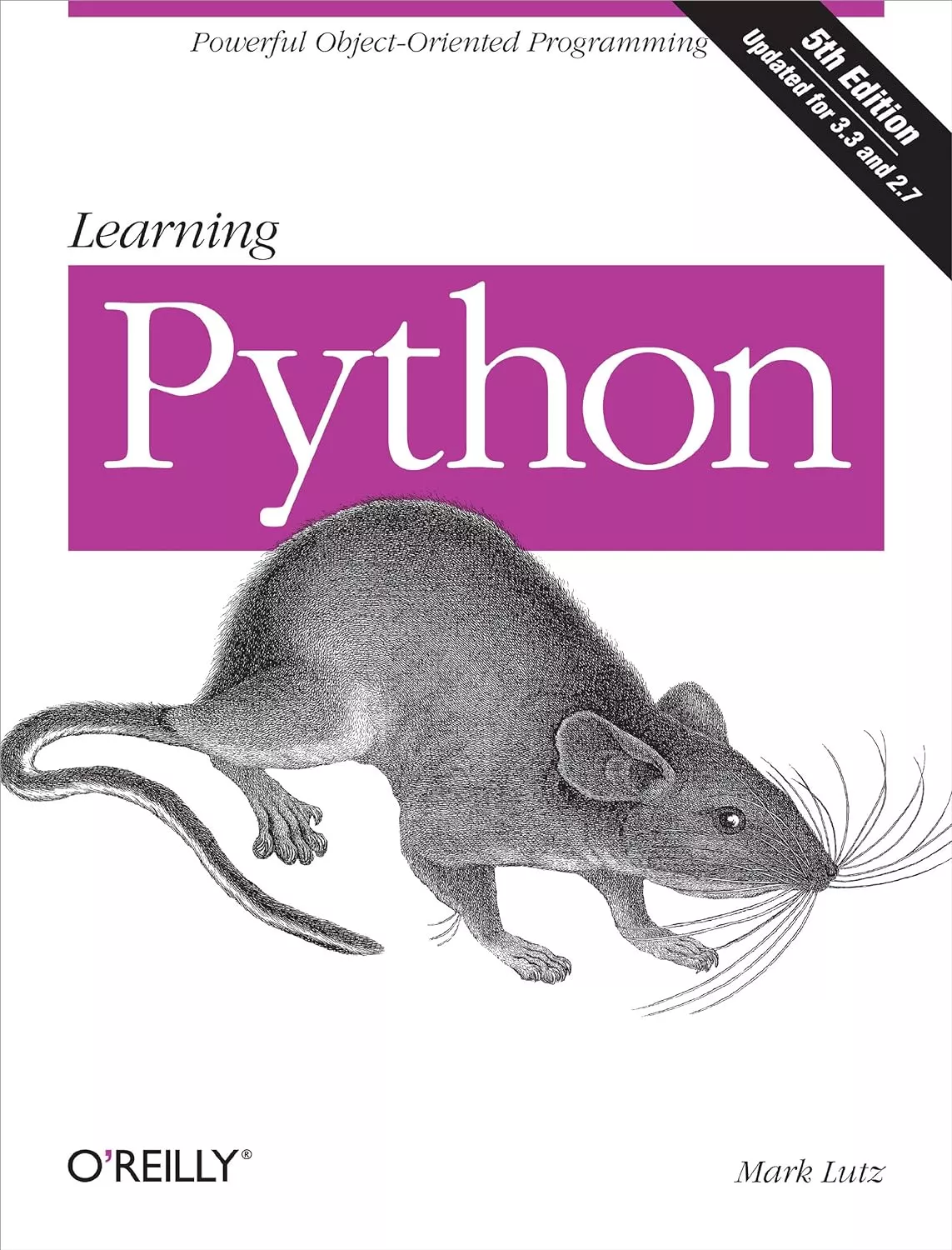
If you’re looking to unravel the intricacies of Python programming, ‘Learning Python’ by Mark Lutz is your go-to resource. This book provides both a comprehensive introduction and hands-on practices that facilitate an understanding of Python, empowering beginners and experienced developers alike. In this review, we will explore its features and insights, helping you decide if it’s the right book for you.
Product Features
| Product Name | Learning Python: Powerful Object-Oriented Programming |
|---|---|
| Manufacturer | Mark Lutz |
| Category | Books |
| Customer Review Count | 1920 |
| Rating | 4.5 out of 5 |
| Features | Comprehensive introduction to core Python language, Hands-on exercises, Coverage of both Python 2.7 and 3.3, Advanced language features exploration, Object-oriented programming emphasis, Exception handling strategies, Insights into decorators, descriptors, metaclasses, and Unicode processing. |
| Description | A thorough guide to Python that combines instruction with exercises, making it suitable for both beginners and professionals looking to deepen their understanding. |
Product Overview
| Pros | Cons |
|---|---|
| In-depth coverage of Python language nuances | Not beginner-friendly |
| Includes quizzes and exercises for hands-on learning | Kindle version can be difficult for navigation |
| Thorough explanations with multiple examples | Requires patience for complex subjects |
Understanding the Core Concepts of Python
In this chapter, we explore the advanced features that Mark Lutz discusses in ‘Learning Python,’ including decorators, descriptors, and metaclasses. These elements not only enhance the language’s capabilities but also provide powerful tools for structuring your code effectively. For instance, decorators allow us to modify or extend the behavior of functions or methods conveniently and transparently. Think about how you could easily add logging or access control to your functions with minimal effort.
In addition, descriptors offer a unique way to manage attribute access in your classes, which can significantly complement your object-oriented design by encapsulating behavior associated with attribute access. With examples drawn from Lutz’s text, I can show you how implementing descriptors can lead to clean, manageable, and reusable code.
Let’s not overlook metaclasses, which are a more advanced Python feature. They enable you to customize class creation and behavior at a deeper level. By understanding metaclasses, you’ll discover how to enforce coding standards and design patterns programmatically, which brings additional robustness to your projects.
Moreover, effective exception handling is crucial in ensuring your code runs smoothly. Lutz emphasizes that handling errors gracefully contributes to robust applications. I encourage you to leverage Python’s built-in exceptions and create custom ones when necessary. This not only makes your debugging experience easier but also provides clear feedback when things go wrong.
Finally, I’ll touch on powerful development tools that elevate your programming efficiency. From integrated development environments (IDEs) to linters and formatters, these tools streamline your workflow, allowing you to focus more on coding than on troubleshooting. By incorporating these advanced concepts and tools, you can significantly enhance your programming prowess, building upon the solid foundation we established in the previous chapter.
Advanced Features and Techniques in Python Programming
In the realm of Python programming, Mark Lutz’s “Learning Python” introduces several advanced features that truly elevate your coding skills. Among these, decorators stand out as powerful tools for modifying the behavior of functions or methods. I find them particularly useful for adding functionality without altering the original code. For instance, you can use decorators to log function calls or enforce access controls, streamlining code while enhancing readability.
Descriptors, on the other hand, offer a unique way to manage attributes in classes. They allow you to encapsulate behavior related to attribute access, making your code cleaner and more maintainable. For example, using a descriptor can help manage the data type of a class attribute, ensuring that values conform to a desired format or type. This can prevent bugs and enforce consistency throughout your application.
Then there are metaclasses, the classes of classes. Although they may seem complex, understanding metaclasses allows you to customize class creation dynamically. This means I can enforce certain attributes or methods required in every class I create, enhancing code structure. Imagine building frameworks where you want every subclass to follow specific conventions—metaclasses make this remarkably easy.
Additionally, effective exception handling helps maintain a smooth user experience by gracefully managing errors. With the right structure, I can write code that anticipates issues and responds accordingly, rather than crashing unexpectedly. Moreover, utilizing development tools like debugging and profiling can significantly enhance my programming efficiency. These tools help me focus on writing high-quality, performant code while minimizing time spent on troubleshooting.
By embracing these advanced features, I can structure my Python code more effectively, paving the way for robust and maintainable programs that adhere to the principles of object-oriented programming.
Conclusions
In conclusion, ‘Learning Python’ by Mark Lutz serves as an excellent tool for understanding Python’s deeper concepts, particularly for those with a foundational grasp of the language. While it may not be the best starting point for absolute beginners, it’s transformative for those who wish to write error-free, efficient code. Its detailed approach is invaluable for programmers aiming for mastery.